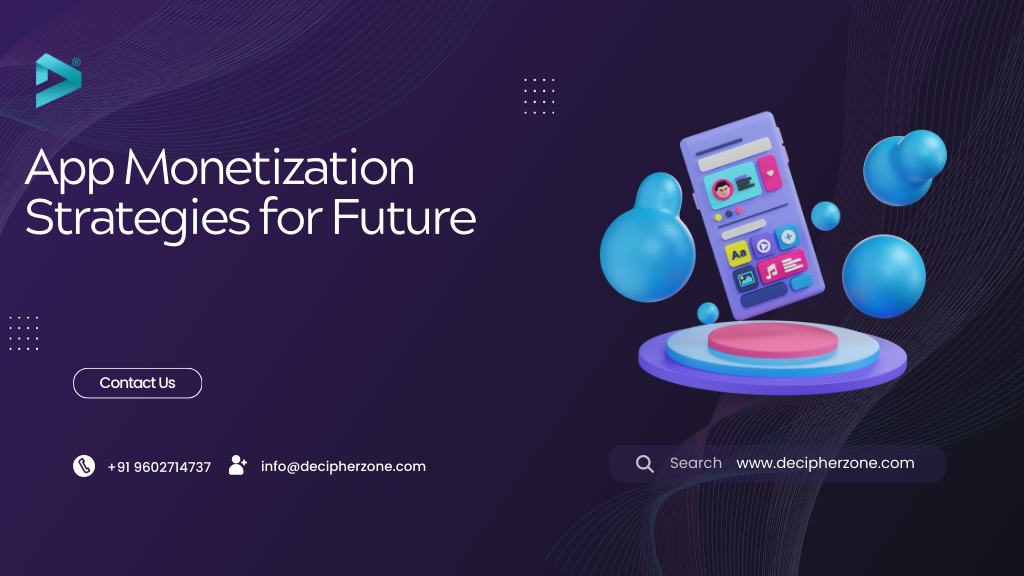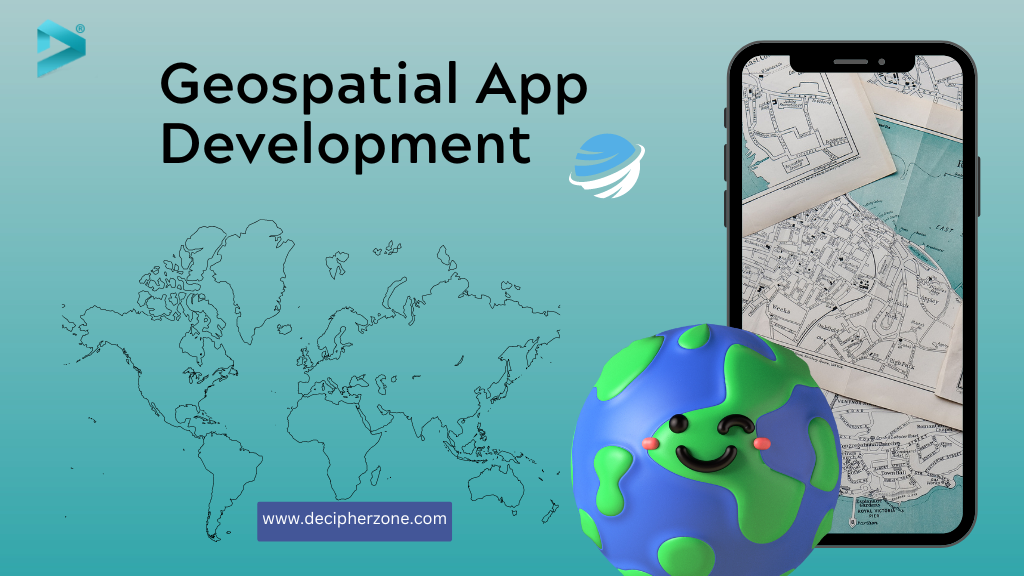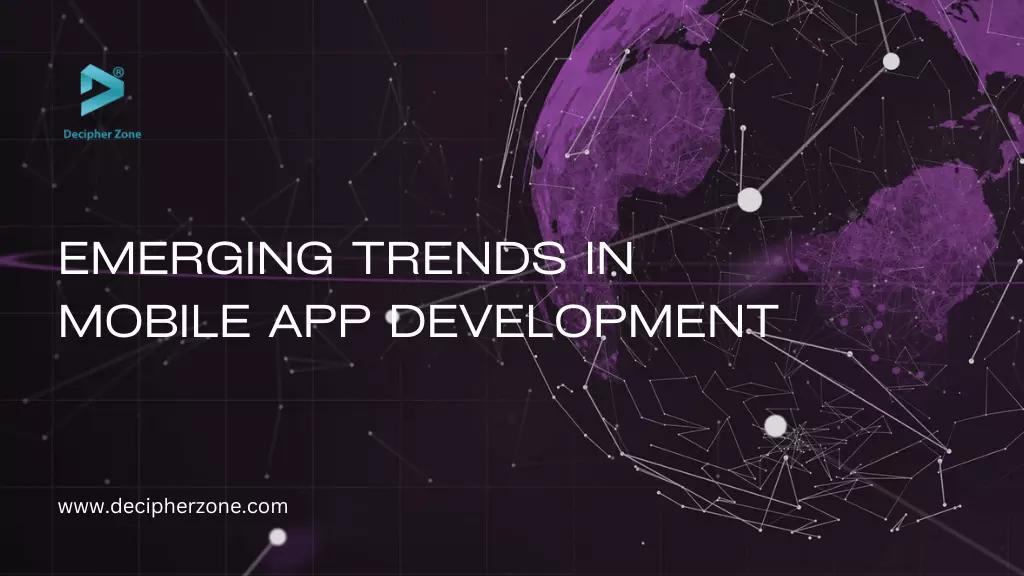Mobile app development stands at the forefront of technological evolution, where the dynamic interplay of cutting-edge technologies and shifting user expectations continually molds the way individuals engage with applications.
In this ever-evolving landscape, developers and businesses find themselves navigating a complex and fluid environment where staying ahead of emerging trends is not merely beneficial but a critical necessity.
Read More: How to Design a Mobile Application in 10 Steps?
The pursuit of innovation, user-centric design, and maintaining a competitive edge hinges on the ability to anticipate and adapt to the transformative forces shaping the mobile app development sphere.
Today, the dynamism of this field is even more pronounced as several transformative trends redefine the mobile app development landscape.
Top 10 Emerging Trends in Mobile App Development for 2025
To navigate this landscape effectively, let’s delve into the emerging trends that are shaping the future of mobile app development in 2025.
-
Artificial Intelligence and Machine Learning
-
5G and Edge Computing Impact
-
Cross-Platform Development
-
Enhanced User Experience (UX)
-
Blockchains in Security
-
App Monetization Strategies for Future
-
Multi-Experience Development
-
Personal Health and Wellness Apps
-
Geospatial App Development
-
Low-Code and No-Code Development
1. Artificial Intelligence and Machine Learning
Mobile app development has undergone a transformative shift with the incorporation of Artificial Intelligence (AI) and Machine Learning (ML), reshaping user interactions.
Machine learning algorithms drive predictive analytics, enabling apps to predict user behavior and offer personalized content and recommendations, enhancing the overall user experience. Voice assistant technologies have also gained prominence, offering users more intuitive and seamless interactions with applications.
Read More: How Is Artificial Intelligence Revolutionizing Marketing?
Virtually every smartphone user utilizes AI voice assistants. As indicated by a Creative Strategies study, 96% of Android users and 98% of iPhone users engage with AI-powered digital assistants, namely Google Assistant' and 'Siri', provided by Google and Apple, respectively.
However, the integration of AI in mobile apps goes beyond user interactions. Developers are leveraging AI to optimize app performance, enhance security measures, and streamline business processes.
Read More: Advantages and Disadvantages of Artificial Intelligence

Moreover, AI streamlines intricate business processes, facilitating enhanced decision-making through data-driven insights. In case you operate a print-on-demand business that operates with custom tote bags or custom card printing, AI can help you automate routine tasks as well as analyze vast datasets for actionable intelligence.
As AI's capabilities continue to advance, the trajectory of its role in mobile app development is set to expand exponentially, promising not just incremental improvements but a paradigm shift in how applications are conceptualized, developed, and experienced.
2. 5G and Edge Computing Impact
The advent of 5G networks marks a revolutionary juncture in the trajectory of mobile app development, heralding an era of unprecedented connectivity and paving the way for transformative experiences. As more users adopt 5G, a positive trend for app developers and the tech industry emerges.
It's worth mentioning that, in 2019, merely 1% of worldwide smartphone shipments comprised devices with 5G capabilities. Market studies indicate a major rise in market share for 5G-enabled mobile devices, expected to reach a staggering 69% by 2023, surpassing major shipments of 4G devices.
The fundamental elements of 5G—enhanced data speeds, reduced latency, and expanded bandwidth—collaborate to reshape the potential boundaries of mobile applications. This seismic shift is not merely about incremental improvements; it is a quantum leap that empowers developers to explore uncharted territories of innovation.
One of the immediate and tangible benefits of 5G lies in the realm of multimedia experiences. With data speeds that outpace their predecessors, developers can craft applications that deliver high-definition video streaming, immersive virtual experiences, and intricate graphics without compromising on performance.
Read More: Top 10 Software Development Trends
Real-time collaborative features, a cornerstone of modern applications, also receive a substantial boost from 5G connectivity. From collaborative document editing to synchronized multimedia content consumption, the synergy between users becomes more fluid and instantaneous.
As a result, mobile applications evolve from solitary tools to hubs of collaborative interaction, fostering a sense of shared experiences and engagement.
3. Cross-Platform Development
The adoption of cross-platform development is on the rise, enabling developers to create applications that function seamlessly across various operating systems. Leading frameworks such as Flutter and React Native have emerged as key players in this domain, providing a cost-effective and time-efficient method for app development.
Flutter, supported by Google, equips developers with an extensive toolkit to build natively compiled applications for mobile, web, and desktop, all from a unified codebase.
According to a 2022 developer survey, Flutter stands out as the preferred cross-platform mobile framework among global developers, with 46% of software developers utilizing it.
Conceived by Facebook, React Native provides a comparable approach, enabling developers to utilize their existing JavaScript expertise to create applications with a native feel on both Android and iOS platforms.
The economic benefits of cross-platform development are noteworthy, especially for startups and businesses operating in environments with limited resources.
Read More: Native vs Cross Platform App Development - A Comparison
Maintaining a single codebase for multiple platforms translates to tangible time and cost savings. By implementing changes, updates, and fixes simultaneously across all platforms, developers can eliminate the requirement for distinct development cycles for each operating system.
This streamlined approach not only expedites the time-to-market for applications but also guarantees a uniform user experience across a variety of platforms.
4. Enhanced User Experience (UX)
UX is essential in the overall process of app development and it is underscored by the fact that 90% of users discontinue using an app due to subpar performance.
Microinteractions, those subtle yet impactful moments within an application, have become a cornerstone of modern UX design. These nuanced interactions, whether it's a gentle vibration upon a successful action or a subtle animation accompanying a transition, contribute to a more engaging and user-friendly experience.
.avif)
Feedback loops, another pivotal element in UX design, facilitate a seamless connection between the user and the application. Instant feedback, whether conveyed through haptic responses or visual cues, strengthens user actions, fostering a perception of control and transparency. Moreover, inclusivity has become an indispensable principle in modern UX design.
Developers are placing growing emphasis on creating accessible designs, guaranteeing that applications are navigable and enjoyable for users of all abilities. This extends beyond traditional considerations of accessibility to encompass features that cater to diverse user needs.
Read More: Mobile App Architecture - A Comprehensive Guide
The current era also witnesses a growing consciousness within the tech industry about its environmental impact. Eco-friendly app design is emerging as a critical consideration in the development process.
From optimizing power consumption to utilizing renewable resources, these initiatives reflect a commitment to environmental responsibility. As users become more environmentally conscious, eco-friendly app design is poised to become a key differentiator in the competitive app market.
5. Blockchains in Security
Security and data privacy have always been paramount concerns in mobile app development, and the integration of blockchain technology is poised to enhance these aspects.
The intrinsic qualities of blockchain, characterized by decentralization and tamper resistance, position it as a formidable guardian of user data and transactions, heralding a new era in app security and data integrity. Blockchain's decentralized architecture fundamentally transforms the traditional paradigm of data storage.

Instead of relying on centralized servers that are susceptible to single points of failure and unauthorized access, a blockchain network distributes data across a network of different nodes.
Each node maintains a copy of the entire blockchain, ensuring redundancy and mitigating the risks associated with a singular vulnerable entry point. This decentralized structure not only enhances the security of user data but also minimizes the likelihood of successful cyber attacks that target centralized repositories.
The application of blockchain in mobile apps not only amplifies security measures but also introduces transparency into the system. In the current landscape, users exhibit heightened discernment when it comes to sharing personal information online.
They seek transparency and accountability from the apps they rely on for their data. The transparent and auditable features of blockchain, where every transaction is recorded in a traceable and publicly accessible ledger, align with these expectations. This instills confidence in users regarding the security and authenticity of the app.
6. App Monetization Strategies for Future
Monetizing mobile apps is a critical aspect of app development, and future strategies are evolving to adapt to changing user behaviors and market dynamics. Subscription models, in-app purchases, and freemium approaches continue to be popular, but developers are exploring new avenues.
Personalized and targeted advertising, driven by AI algorithms, is gaining traction. Developers are focusing on delivering relevant ads to users, enhancing the overall user experience while maximizing revenue potential.
Read More: Why Invest in Mobile App Development for Your Business?

Furthermore, the surge in virtual goods and experiences within apps is paving the way for inventive monetization opportunities, establishing fresh revenue streams for developers. Users are progressively inclined to invest in virtual goods, encompassing in-app items, skins, or other digital assets that augment their overall experience.
This trend is especially pronounced in gaming applications, where virtual goods and experiences contribute not only to user satisfaction but also to a diversified revenue stream for developers.
7. Multi-Experience Development
The progression of mobile app development goes beyond conventional smartphones and tablets. The ascent of Augmented Reality (AR), Virtual Reality (VR), and Mixed Reality (MR) has given rise to the development of multi-experience applications.
Developers are now challenged to craft applications that seamlessly blend into these immersive environments. AR applications, for example, enhance real-world experiences by overlaying digital information onto the physical environment. VR and MR applications offer users entirely new and immersive worlds to explore.
Read More: Mobile App Development Process - A Step by Step Guide

As these once-niche technologies become more accessible, multi-experience development is poised to become a standard in the mobile app development landscape.
The democratization of AR, VR, and MR tools empowers developers to explore creative possibilities, enabling the integration of immersive elements into a wide array of applications, from gaming and education to healthcare and enterprise solutions. Looking ahead, the trajectory of multi-experience development is marked by limitless potential.
8. Personal Health and Wellness Apps
The health and wellness sector is experiencing a surge in mobile app development, with a focus on personalized solutions. Health monitoring and fitness apps, once primarily focused on basic metrics, are now undergoing a transformation powered by AI.
These applications leverage AI algorithms to provide users with personalized workout routines, nutrition plans, and real-time analysis of health data. The integration of AI also enables apps to evolve alongside users, adapting to changing fitness levels, preferences, and goals.
Read More: Mental Health App Development - A Descriptive Guide

Mental health and well-being apps are emerging as a vital component of the broader health app landscape, reflecting society's growing recognition of the interconnectedness of physical and mental health.
These applications go beyond the conventional role of tracking steps or calories burned; they delve into the realm of holistic health, offering stress management tools, meditation guidance, and mental health tracking features.
As societal attitudes toward mental health become more accepting, these applications play a crucial role in enabling users to proactively manage their emotional well-being.
Additionally, the incorporation of wearables and health-tracking devices amplifies the functionalities of personal health and wellness applications. These devices continuously generate real-time data, enabling apps to provide more precise and timely insights.
Whether it involves tracking heart rate, sleep patterns, or stress levels, the collaboration between wearables and health apps establishes a comprehensive ecosystem that empowers users to make well-informed decisions about their health.
9. Geospatial App Development
Location-based services have been a staple of mobile app development, but emerging technologies are taking geospatial applications to new heights. The integration of augmented reality with geospatial data enhances navigation and exploration experiences.
As an illustration, users can access up-to-the-minute details about their environment via their mobile device's camera, enhancing navigation with greater intuitiveness and information.
Read More: Common Features of Mobile Apps and their Benefits

Furthermore, the trajectory of geospatial app development is closely linked with the embrace of advanced mapping technologies, notably Light Detection and Ranging (LiDAR).
By utilizing laser beams to measure distances and generate highly detailed maps, LiDAR holds the potential to transform the precision and depth of geospatial experiences.
By leveraging LiDAR technology, developers can create more precise and immersive augmented reality environments, ensuring that virtual overlays align seamlessly with the physical world.
10. Low-Code and No-Code Development
The demand for faster development cycles and increased accessibility has led to the rise of low-code and no-code development platforms.
These platforms empower individuals with varying levels of technical expertise to participate in the app development process, reducing the reliance on traditional coding skills. As expected, the worldwide low-code platform market is projected to reach around 65 billion U.S. dollars by 2027.

Low-code platforms provide a visual development environment with pre-built components, allowing developers to create applications with minimal hand-coding.
No-code platforms take this a step further, enabling individuals with little to no coding experience to build functional apps through intuitive interfaces. The adoption of low-code and no-code development is accelerating, enabling businesses to rapidly prototype and deploy applications.
Read More: The Future of Software Development: Predictions and Trends
Conclusion
The mobile app landscape in 2025 signifies a harmonious blend of cutting-edge technology and evolving user demands. From AI and 5G to cross-platform development and blockchain security, developers navigate a dynamic terrain. Enhanced user experiences, inclusivity, and eco-friendly design showcase a commitment to user-centric development.
Moreover, monetization strategies adapt to changing behaviors, multi-experience development transforms app creation, and personal health apps leverage AI for tailored solutions.
Meanwhile, geospatial apps redefine location-based services, and low-code platforms democratize development.
Stepping into 2025, developers must embrace these trends for relevance and competitiveness, ensuring continuous adaptation and innovation to exceed user expectations and shape the future of mobile app development.

